common prickly-ash (Zanthoxylum americanum)
Rutaceae, the citrus family
How to recognize common prickly-ash. The resemblance to ash is superficial, referring only to the pinnately compound leaves. Unlike those of ashes, common prickly-ash leaves are alternately arranged, thus the plant more closely resembles black-locust (Robinia) than it does Fraxinus, especially because both plants have paired stipular spines. To confirm common prickly-ash, note that the leafstalks bear a few prickles, and the leaflets are acute at the tips and serrate along the margins.
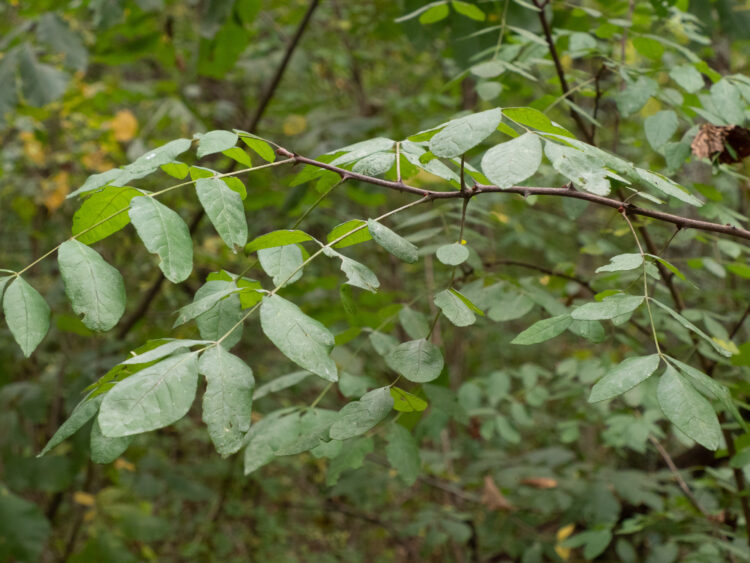
Common prickly-ash has alternate pinnately compound leaves.
Flowers and fruits. Prickly-ash is a dioecious shrub. Appearing when the leaves are emerging in early spring, the flowers are about 3mm wide, greenish, lack a calyx, and are said to have 4 or 5 petals. They are borne in clusters in the axils of emerging leaves. The male flowers, shown below, contain 3-5 long-exerted stamens.
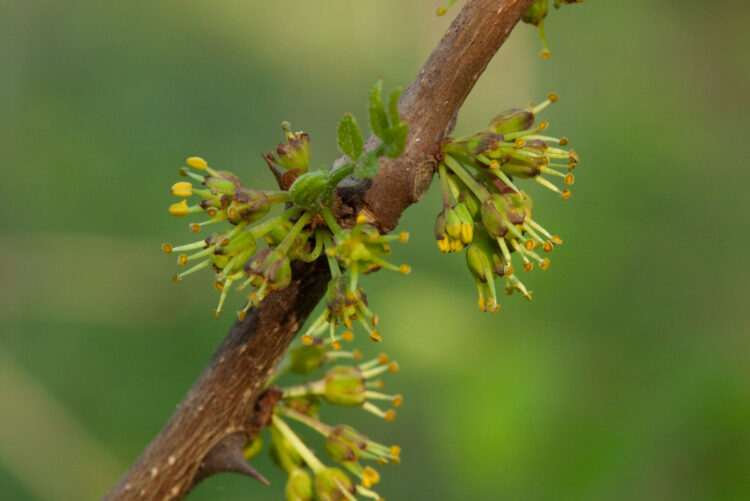
Male flowers of prickly-ash.
April 15, 2010, Delaware County, Ohio.
The female flowers consist 4 or 5 distinct pistils with their styles somewhat united.
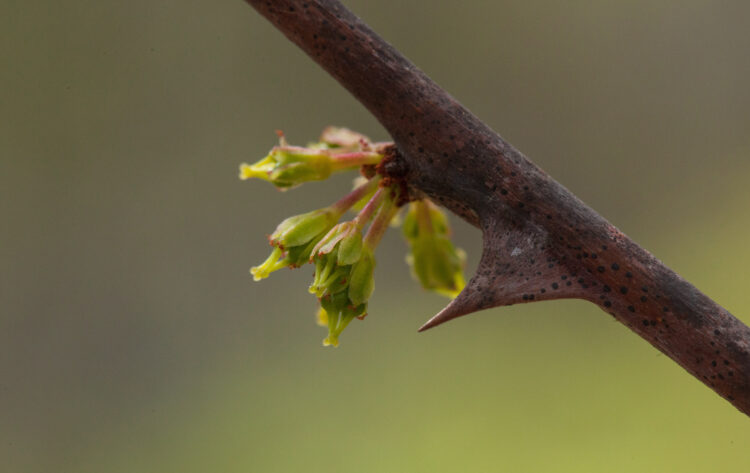
Prickly-ash female flowers.
April 15, 2010, Delaware County, Ohio.
Prickly ash fruits are bright red follicles (dry fruits that split open along one line or suture), maturing in August. They have a zingy taste, as does the bark of the twigs, and the leaves. Chewing them causes a numbing sensation; the shrub is colloquially known as “toothache-tree.”
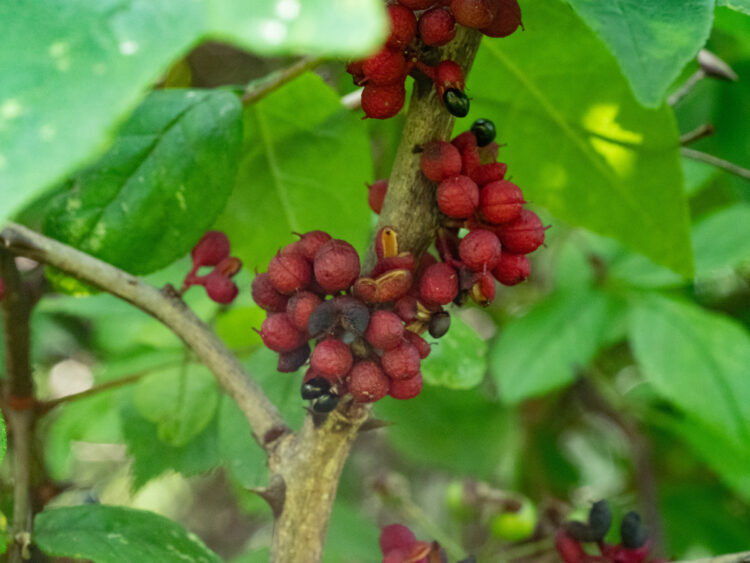
Prickly-ash fruits.
August 10, 2023, Miami County Ohio.
In the winter. Common prickly-ash twigs look like the red-haired 20th century American comedienne Lucile Ball.
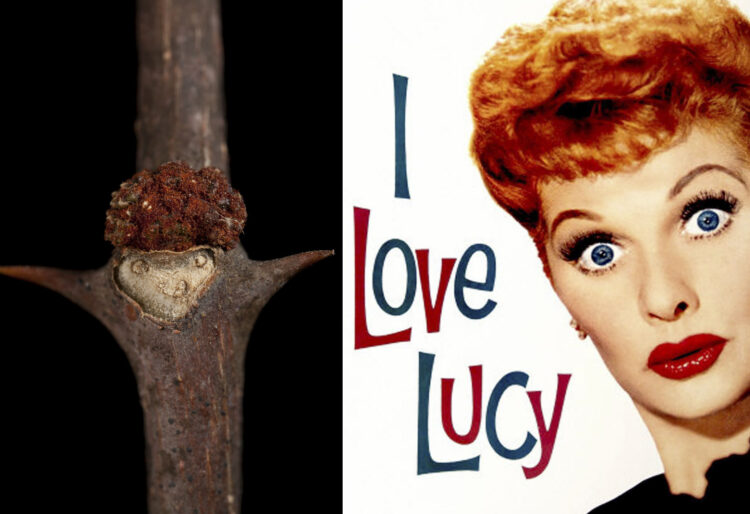
common prickly-ash twig.
Where to find common prickly-ash. E. Lucy Braun, in The Woody Plants of Ohio (1961, 1989; The Ohio State University Press) tells us that this species is “Widely distributed in Ohio, in open woods, and on steep, often calcareous banks, sometimes forming dense thickets.
Scanned Image from an Old Book
(Flora of West Virginia, by P.D. Strausbaugh and Earl L. Core)

common prickly-ash
Ooh ooh. I have a question!
What family is prickly-ash a member of, and why is this of special interest to butterfly enthusiasts?
Prickly-ash is a member of the citrus family and as such is one of only two Ohio plants that are food for the caterpillars of the giant swallowtail butterfly (the largest butterfly in North America). Below see the larva on a leaf of prickly-ash, looking very much like bird poop, and below that an adult.
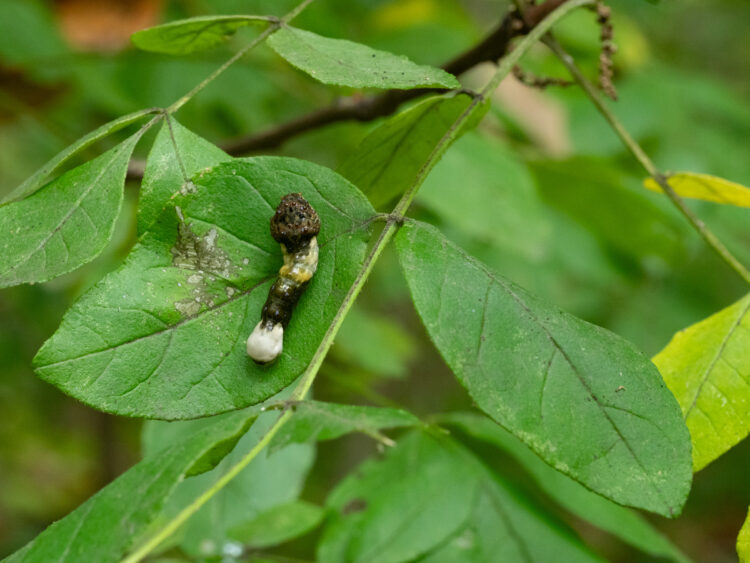
Giant swallowtail caterpillar son prickly-ash
seen September 25, 2023, at Batelle Darby Metro Park.
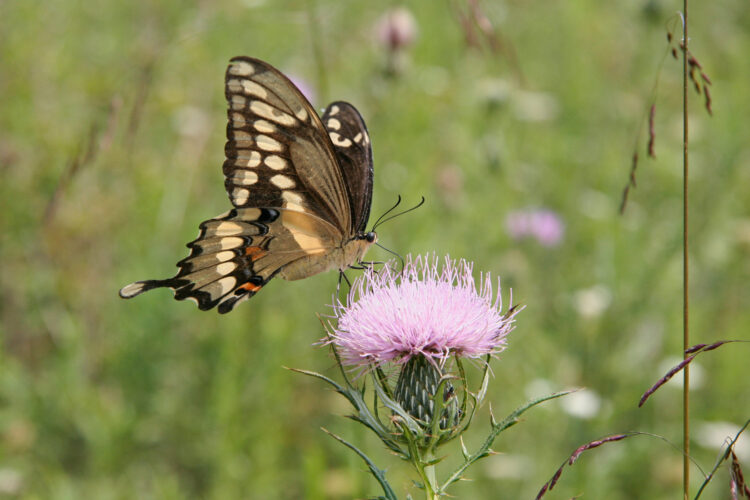
Giant swallowtail sipping nectar of pasture thistle.
